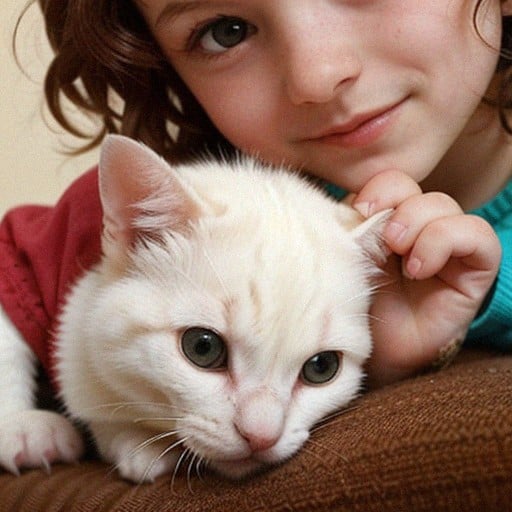Choosing The Best Small Pet For Your Child – Factors To Consider
Hey there! Are you looking for the perfect small pet for your child? Well, you’ve come to the right place! In this guide, I’ll be providing you with some valuable information on how to choose the best small pet for your little one.
We all know that having a pet can bring so much joy and companionship, but it’s important to consider a few factors before making a decision. By the end of this article, you’ll have a better understanding of what to look for in a small pet and be equipped to make the best choice for your child. So let’s get started on this exciting journey together, shall we?
Quick Tips
Tip 1: Consider your child’s age and maturity level when choosing a small pet. Young children may not be ready for the responsibility of caring for certain animals, while older kids can handle more complex tasks.
Tip 2: Think about the space you have available in your home. Some pets, like hamsters or fish, can thrive in small habitats, while others, like rabbits or guinea pigs, need more room to roam.
Tip 3: Research the specific needs and behaviors of different small pets before making a decision. Some pets, such as birds, require daily interaction and socialization, while others, like reptiles, may have specific temperature and habitat requirements.
Tip 4: Consider the amount of time and effort you are willing to dedicate to the pet’s care. Some animals, like dogs or cats, require daily exercise and grooming, while others, like hermit crabs or mice, have more relaxed care needs.
Choose pet that offers educational benefits
It is important to choose a pet that will provide your child with educational benefits when choosing a pet for them. One factor to consider is the pet’s lifespan. By selecting a pet with a longer lifespan, such as a tortoise or a parrot, your child can learn about responsibility, commitment, and long-term care. Another factor is the pet’s behavior.
If your child is interested in observing and studying animal behavior, a small mammal like a hamster or a guinea pig can provide ample learning opportunities. Additionally, you should consider the pet’s habitat requirements. Pets like fish or reptiles require special environments, teaching your child about the importance of maintaining a suitable habitat.
Lastly, consider if the pet can be trained. Dogs and cats can provide valuable lessons in discipline and training. By choosing a pet that offers educational benefits, you are helping your child develop important life skills while enjoying the companionship of a beloved pet.
Consider pet size, age and activity level
Small pets are a great choice for children. However, there are a few things you need to take into consideration when selecting one.
First, think about the pet’s size. Smaller pets like hamsters or mice may be easier for your child to handle and care for. Next, take into account the pet’s age. A young pet may require more attention and training, while an older pet may already be trained and more independent.
Lastly, consider the pet’s activity level. Some pets, like rabbits, enjoy running and playing, while others, like turtles, are more relaxed and prefer a calm environment. It’s important to match the pet’s activity level with your child’s energy level to ensure a good match.
Remember, each pet is unique, so take the time to research and find the perfect small pet that will fit your child’s needs and provide many years of companionship and joy.
Research pet care requirements
When choosing a small pet for your child, it’s important to research their specific care requirements. Firstly, consider their lifespan. Some small pets like hamsters only live for around two years, while others like guinea pigs can live for five to seven years. Next, learn about their dietary needs.
For example, hamsters require a diet consisting of seeds, grains, fruits, and vegetables. Guinea pigs, on the other hand, need a diet rich in hay and fresh vegetables. It’s also crucial to understand their living arrangements. For instance, hamsters need a secure enclosure with tunnels and hiding spots, while guinea pigs require a spacious cage with fresh bedding.
Additionally, consider their social needs. Hamsters are usually solitary creatures, whereas guinea pigs thrive in pairs or small groups. By considering these factors, you can ensure that you choose the best small pet for your child, one that suits their lifestyle and needs.
Consider family allergies
When choosing a small pet for your child, it is important to consider family allergies. Allergies can cause discomfort and health issues for both your child and the pet. So, before bringing a new furry friend into your home, it’s wise to find out if anyone in your family has allergies. Talk to your doctor about getting allergy tests done to determine if any family member is allergic to pet dander.
If someone in your family is allergic, don’t worry! There are hypoallergenic pet options available. These pets produce fewer allergens, making them a better choice for allergy sufferers. Some popular hypoallergenic small pets include certain dog breeds, such as poodles and bichon frises, as well as reptiles like turtles and geckos.
Remember, keeping your child and family safe and healthy should always be your top priority. By considering family allergies when choosing a small pet, you can ensure a harmonious and enjoyable pet ownership experience for everyone involved.
Final Words
My conclusion is that I hope this guide has provided you with valuable insights into how to choose the right small pet for your child. By assessing factors such as the child’s age, the pet’s lifespan, and the level of care needed, you can make an informed choice. Remember, bringing a pet into your child’s life can teach them important life lessons and provide them with a loyal companion.
It is crucial to choose the right pet, one that matches your child’s personality, interests, and commitment level. So take the time to assess your family’s situation and consider all the factors before making this important decision. By following this guide, you can ensure a successful and fulfilling pet ownership experience for both your child and the adorable little companion they choose.


